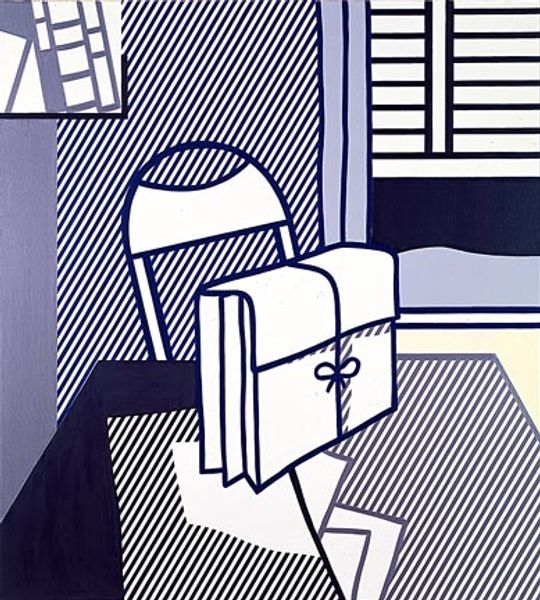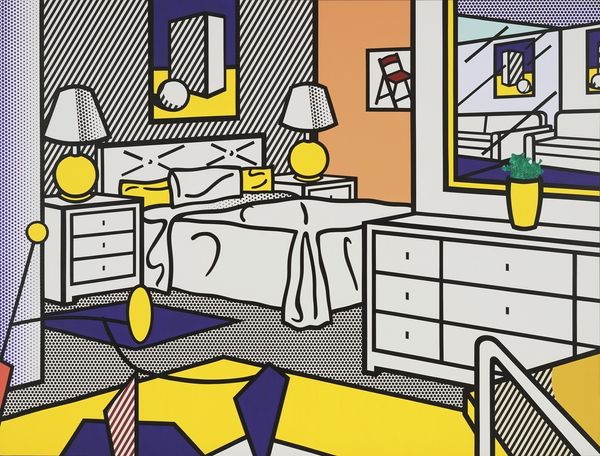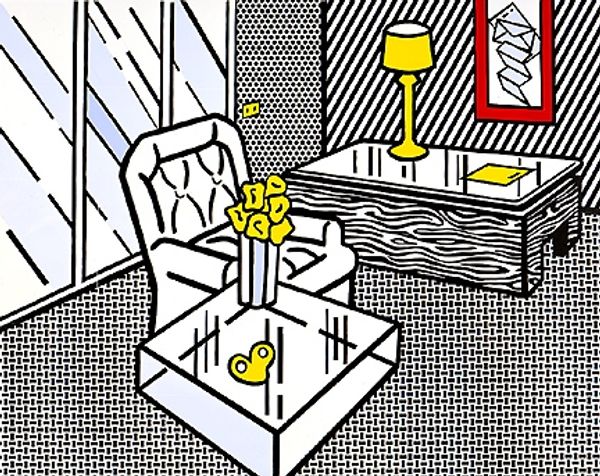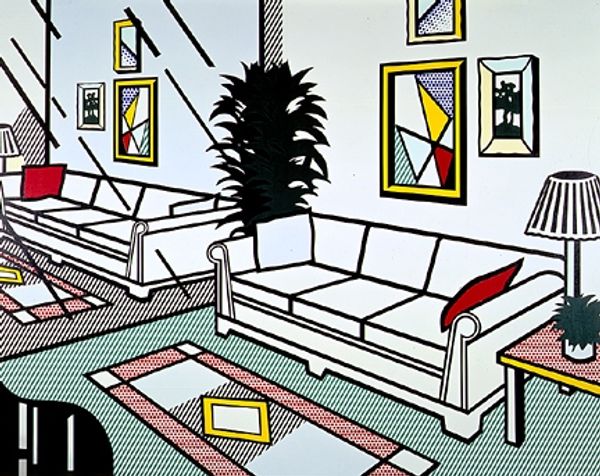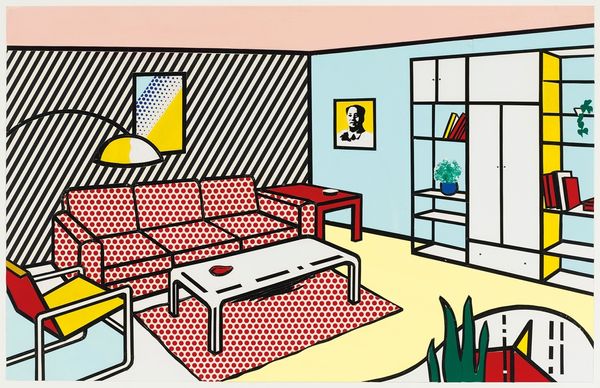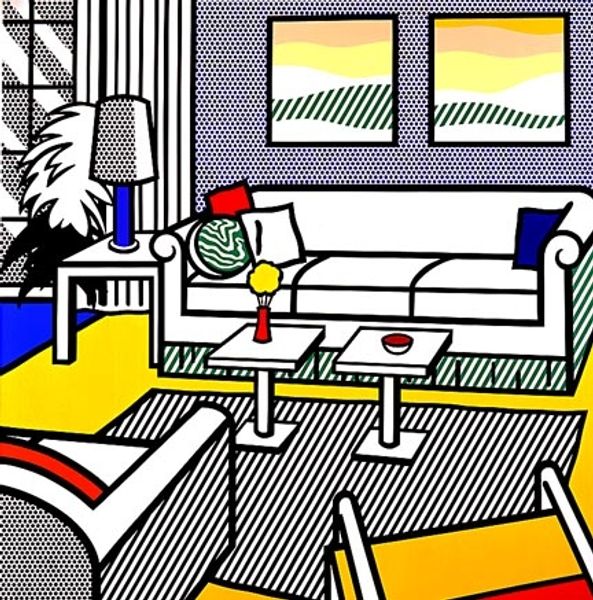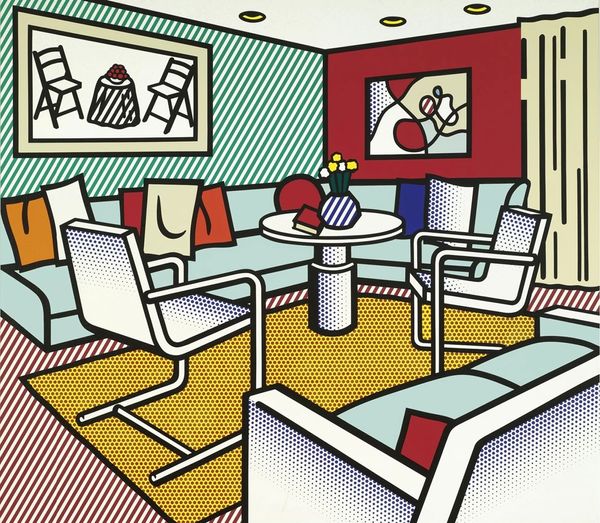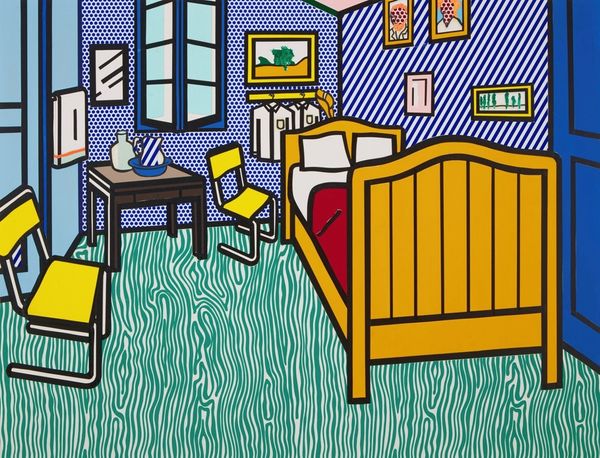
Dimensions: support: 3209 x 4553 x 65 mm
Copyright: © Estate of Roy Lichtenstein/DACS 2014 | CC-BY-NC-ND 4.0 DEED, Photo: Tate
Curator: Roy Lichtenstein's "Interior with Waterlilies," now residing at the Tate, is a vibrant example of his Pop Art sensibilities applied to a familiar subject. What's your initial impression? Editor: It feels strangely sterile, despite the domestic subject matter. The hard lines and stark colors create an unsettling detachment, almost clinical. Curator: That detachment is key. Lichtenstein is engaging with the commodification of domesticity and nature, using his signature Ben-Day dots and bold outlines to flatten and mass-produce even something as seemingly tranquil as waterlilies. Editor: And the waterlilies themselves are a reference to Monet, another layer of cultural coding. It's as though Lichtenstein is questioning the authenticity of experience through the lens of art history. Curator: Precisely. He's commenting on how art and culture are consumed and reproduced, and how that process alters our perception of reality and lived experience. Editor: It leaves me pondering the socio-political implications inherent in appropriating and recontextualizing symbols, and whether doing so amplifies or diminishes their original power. Curator: Indeed. A fascinating work offering insights into art, culture, and our consumerist society.
Comments
tate 8 months ago
⋮
http://www.tate.org.uk/art/artworks/lichtenstein-interior-with-waterlilies-t07339
Join the conversation
Join millions of artists and users on Artera today and experience the ultimate creative platform.
tate 8 months ago
⋮
Inspired by a furniture advertisement on a billboard outside Rome, Lichtenstein made a series of large ?interior? paintings between 1991 and 1993. He has transferred the dimensions of the billboard and a visual style reminiscent of advertising into a fine art context. The combination is highly unsettling, simultaneously encouraging and undermining recognition in the viewer. The scale creates an unreal space that situates us both within and outside the picture, as if it were a room that could be entered. Gallery label, September 2004

